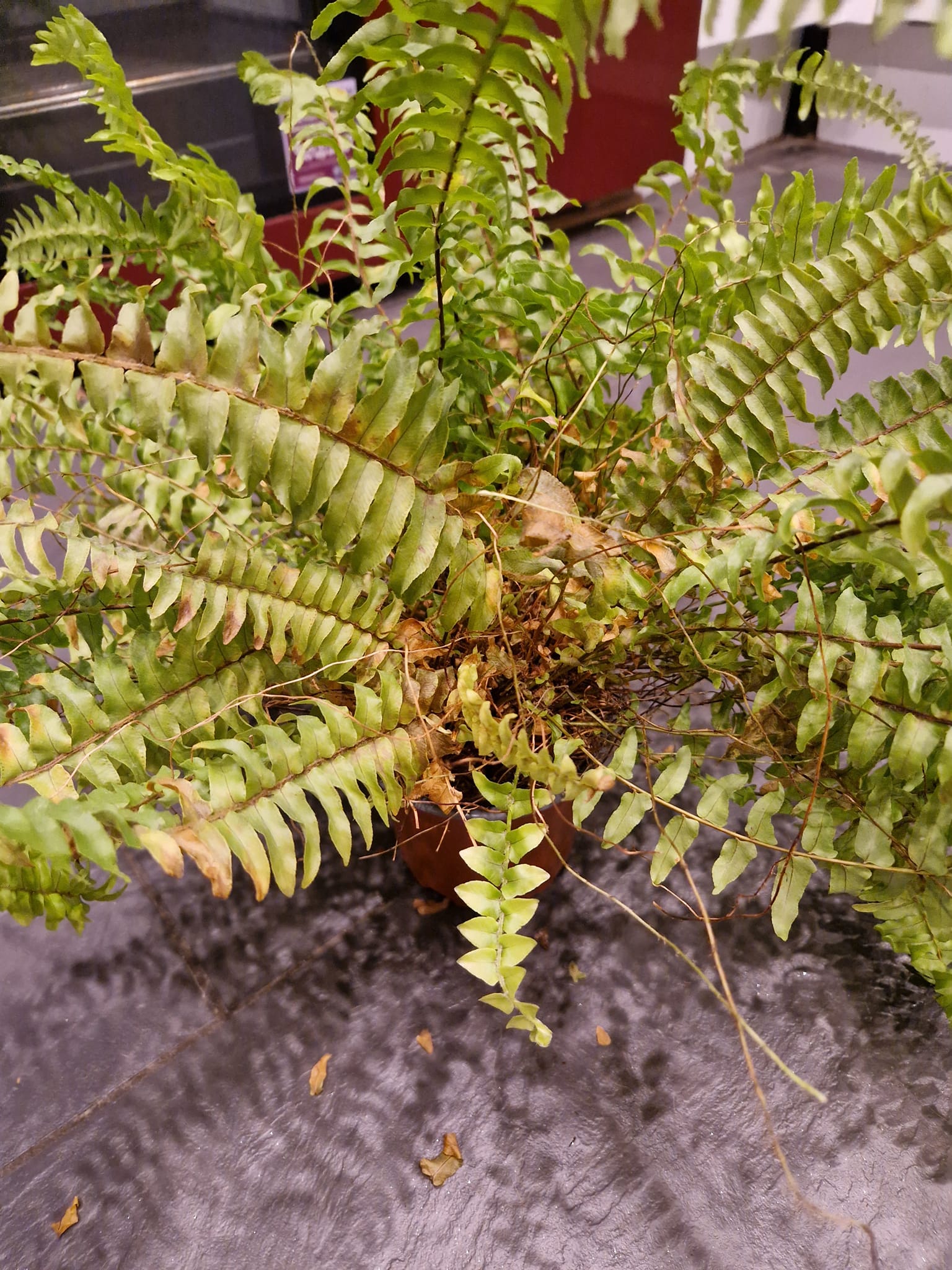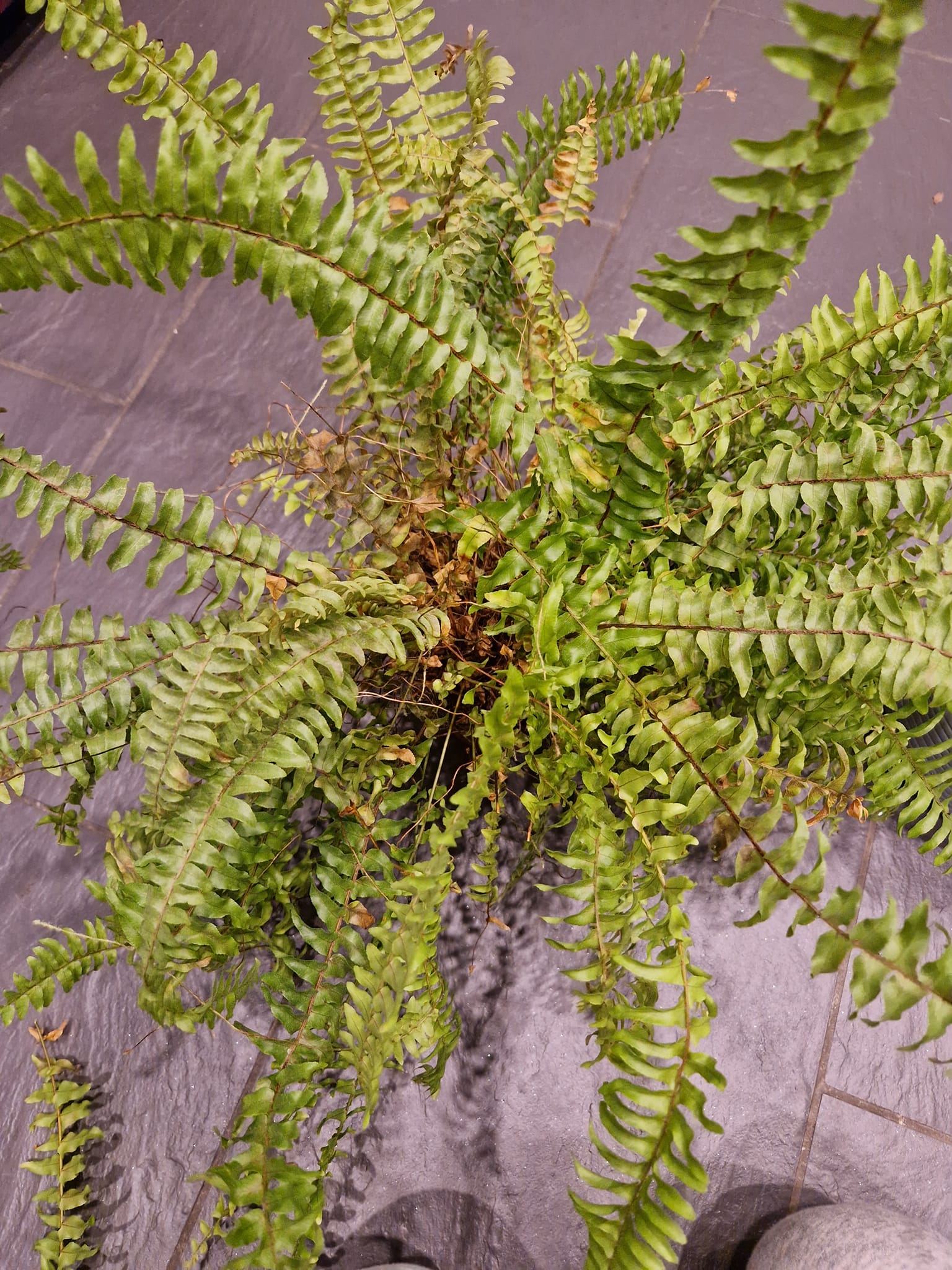
Boston ferns (Nephrolepis exaltata) are beloved houseplants known for their delicate, feathery fronds that add a lush, tropical feel to any indoor or outdoor space. However, many plant owners encounter the frustrating issue of brown leaves, which can make the plant look unhealthy and unattractive. If you’ve noticed your Boston fern developing brown, crispy foliage, you might be wondering what’s causing the problem and how to fix it.
Fortunately, brown leaves on a Boston fern are usually a sign of an environmental issue that can be corrected with a few simple adjustments. In this guide, we’ll explore the possible reasons for browning leaves and provide practical, foolproof solutions to restore your fern’s beauty and health. Whether the problem is due to improper watering, low humidity, inadequate lighting, nutrient deficiencies, or pest infestations, we’ve got the answers to help you bring your fern back to life.
I’ve provided detailed information in the article below to help with your concerns, However, if you still have questions or need more help, feel free to share photos of your plants or describe your issue on our Facebook Group. Just join the group and leave a comment on the most recent post — either I or someone from the community will respond as soon as possible. We also share helpful and unique plant care tips daily, so consider joining the group to stay updated!
Why Are My Boston Fern’s Leaves Turning Brown?

There are several potential causes for browning leaves on a Boston fern. Understanding the underlying issue is the first step toward fixing it. Below are some of the most common reasons why your fern may be struggling:
1. Low Humidity Levels
Boston ferns are native to tropical and subtropical regions, where humidity levels are consistently high. When grown indoors, they often suffer from dry air, especially during colder months when heating systems are running. Insufficient humidity causes moisture loss in the fronds, leading to dry, brown, and brittle leaves.
How to Recognize Low Humidity Issues:
- Leaf edges and tips turn brown and crispy.
- The overall plant looks dry and stressed.
- Browning occurs more frequently during winter.
2. Inconsistent or Improper Watering
Watering is a critical aspect of Boston fern care, but many plant owners either overwater or underwater their ferns. These plants prefer evenly moist soil, meaning they don’t tolerate prolonged droughts or soggy, waterlogged conditions.
Signs of Overwatering:
- Yellowing leaves before turning brown.
- Mushy, rotting roots.
- Soil remains excessively wet for long periods.
Signs of Underwatering:
- Leaves dry out and become crisp.
- Soil feels dry several inches below the surface.
- Growth slows down or stops.
3. Direct Sunlight Exposure
Boston ferns thrive in filtered or indirect light. When placed in direct sunlight, especially near south- or west-facing windows, the leaves can scorch and develop brown spots.
Symptoms of Too Much Sunlight:
- Brown, sunburned patches on fronds.
- Leaves feel dry and brittle.
- The plant appears wilted despite adequate watering.
4. Nutrient Deficiency
Like all plants, Boston ferns need essential nutrients to grow and maintain healthy foliage. If the plant isn’t receiving adequate nutrients, particularly nitrogen, the leaves may turn brown and start shedding.
Indications of Nutrient Deficiency:
- Pale green or yellowish leaves before browning occurs.
- Stunted growth.
- Weak or thinning foliage.
5. Pests and Diseases
Boston ferns can sometimes fall victim to common houseplant pests like spider mites, aphids, and mealybugs. These tiny insects suck the sap from the leaves, causing them to dry out and turn brown. Additionally, excessive moisture can lead to fungal infections, further contributing to leaf discoloration.
Signs of Pest Infestations:
- Tiny webbing on the plant (spider mites).
- Sticky residue on leaves (aphids or scale insects).
- Small holes or speckled patterns on foliage.
Signs of Fungal Issues:
- Brown or black spots with a fuzzy texture.
- Leaves wilting despite adequate watering.
- Musty smell from the soil.
6. Overcrowding and Lack of Pruning
Over time, Boston ferns can become dense, making it difficult for air and nutrients to circulate properly. When older fronds are left unattended, they can dry out and turn brown, affecting the plant’s overall appearance.
How to Recognize Overcrowding:
- Inner fronds begin to turn brown while outer leaves remain green.
- Plant looks overly bushy with tangled fronds.
- Some sections appear dead or lifeless.
Foolproof Fixes for Boston Fern Brown Leaves
Now that you know what’s causing the problem, let’s explore the best ways to fix and prevent brown leaves on your Boston fern.
1. Increase Humidity
Since Boston ferns thrive in high humidity, creating a more favorable environment is essential. Here are some effective ways to boost humidity levels:
- Place a humidity tray under the plant by filling a shallow dish with pebbles and water.
- Use a humidifier to maintain an ideal humidity range of 50-70%.
- Mist the fern daily with distilled or filtered water.
- Group your fern with other houseplants to naturally increase surrounding moisture.
2. Perfect Your Watering Routine
Proper watering habits make a significant difference in your fern’s health. Follow these guidelines:
- Water when the top inch of soil feels dry but avoid letting the soil dry out completely.
- Use room-temperature, filtered water to prevent chlorine buildup, which can damage delicate roots.
- Ensure the pot has drainage holes to prevent water from pooling at the bottom.
3. Adjust Light Exposure
Protect your fern from direct sunlight by:
- Moving it to a location with filtered, indirect light, such as near a north- or east-facing window.
- Using sheer curtains to diffuse harsh sun rays.
- Keeping the plant at least a few feet away from bright artificial light sources.
4. Fertilize Properly
Maintain proper nutrition by:
- Using a balanced, water-soluble fertilizer (10-10-10) once a month during the growing season.
- Avoiding over-fertilizing, as excess salts can accumulate in the soil and cause leaf burn.
- Incorporating organic compost or liquid seaweed fertilizer for a natural boost.
5. Inspect for Pests and Diseases
Regularly check your fern for signs of pests and treat infestations early:
- Wipe leaves with a damp cloth or spray with neem oil.
- Introduce beneficial insects like ladybugs to control pests naturally.
- Remove infected leaves to prevent disease spread.
6. Prune and Repot When Needed
Regular maintenance helps your Boston fern stay healthy and vibrant:
- Trim dead or damaged fronds with sterilized scissors to encourage new growth.
- Repot the fern every 1-2 years to refresh the soil and provide room for root expansion.
- Divide an overgrown fern into smaller sections to promote better airflow and healthier growth.
Preventing Brown Leaves in the Future
To keep your Boston fern thriving year-round:
- Maintain high humidity levels with a humidifier or pebble tray.
- Water consistently without letting the soil dry out completely.
- Provide indirect light and avoid exposure to harsh sun rays.
- Feed your fern properly to support lush growth.
- Regularly inspect for pests and treat infestations promptly.
- Prune and repot to keep the plant manageable and healthy.
